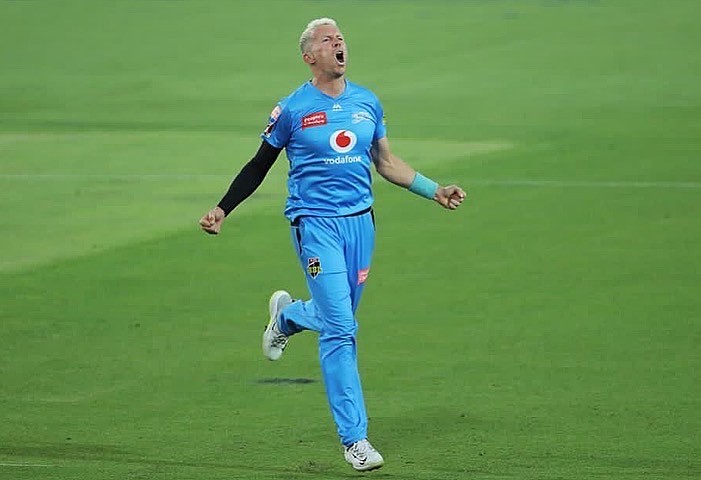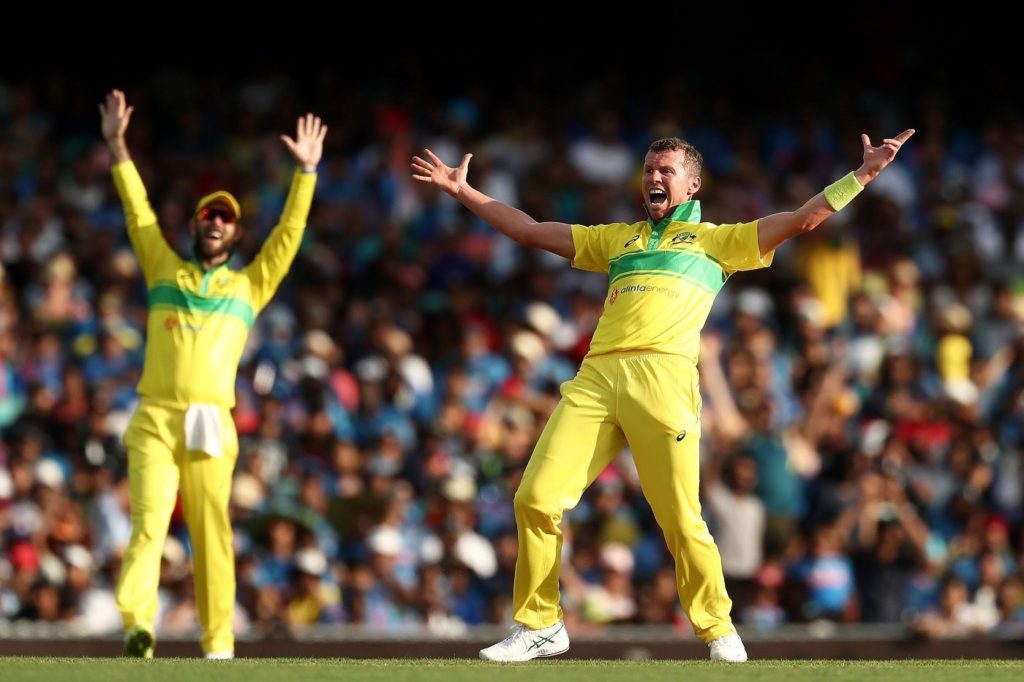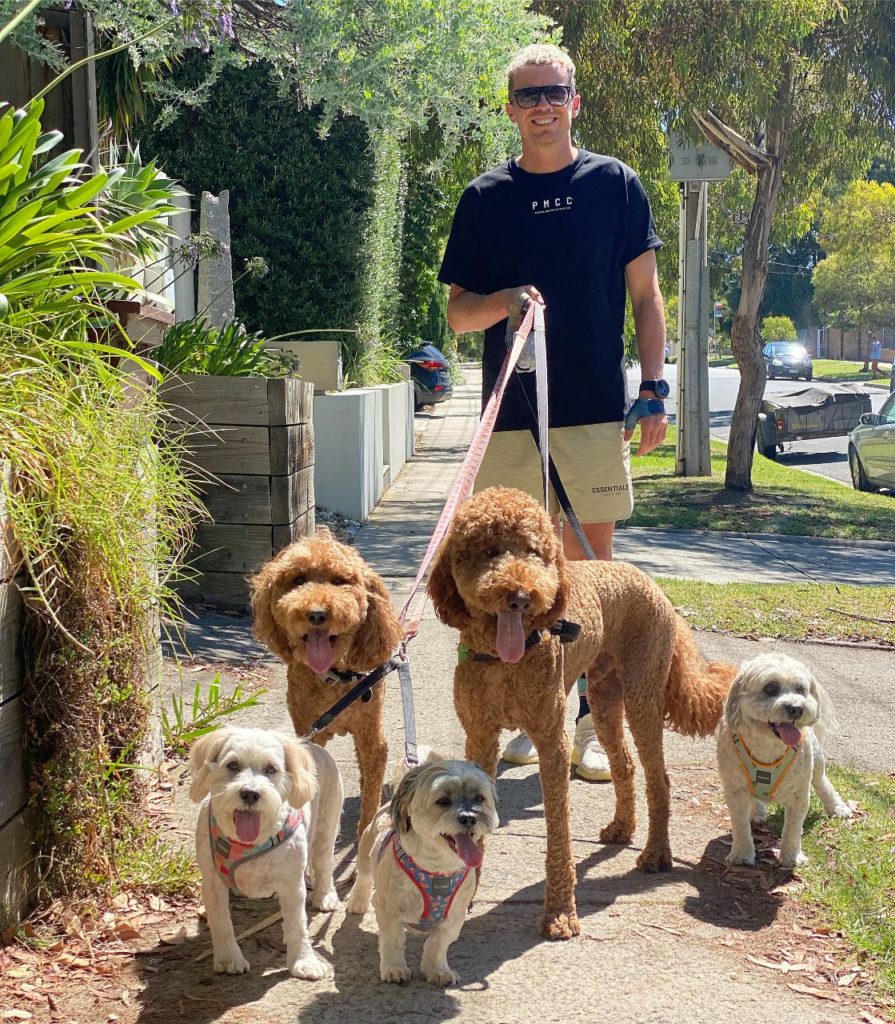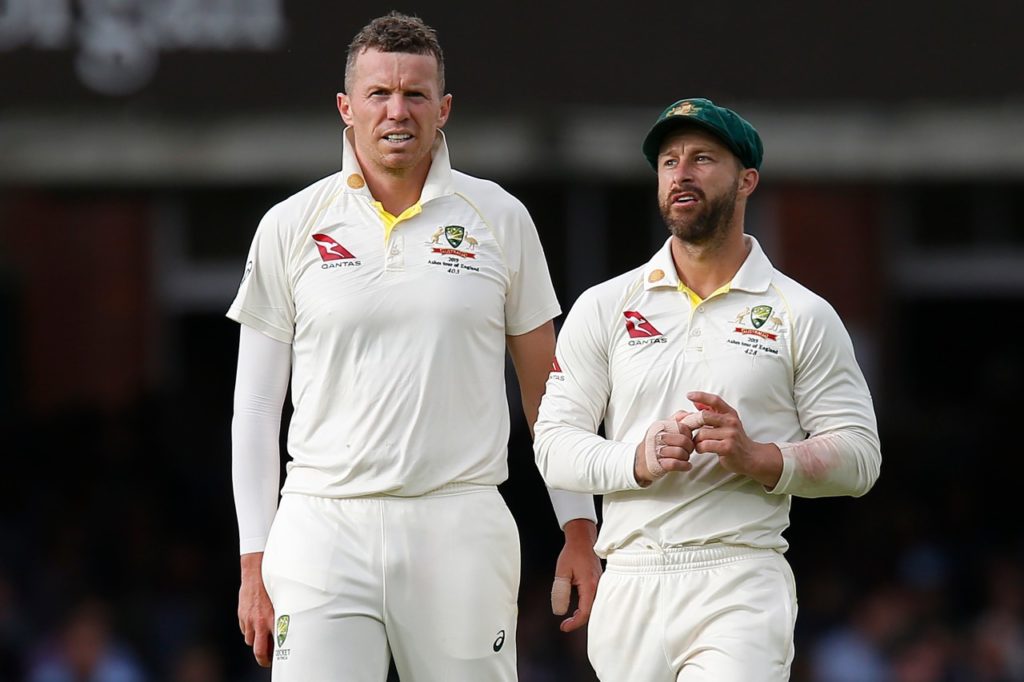PODCAST: How Peter Siddle’s Body Became His Temple
by Stephanie Williams

Peter Siddle is a former Australian cricketer, a plant-based athlete, and currently calling Hobart home while playing for Tasmania. For more of Steph’s chat with Peter Siddle, tune into The Hobart Magazine Podcast here
How did you get started in cricket? For a lot of young sportspeople, it starts at a young age in the backyard with your parents or your other siblings. It was no different for me. The Boxing Day Test, being a Victorian, was always a huge part of the
summer holidays.
Did you get to go every year? I did. Once I got old enough and could withstand a full day of cricket! Dad was quick to grab me and my brother and take us down and watch a few games. It definitely started in the backyard then obviously primary school. Me and a few mates joined my first club and took off from there.
How did the Cricket Tasmania connection happen? I’ve got a couple of good mates here. Tim Paine – we grew up playing against each other in all the junior stuff, and over the years. Matty Wade moved over to Victoria to get his shot as a wick-
et-keeper and I played under him. He was captain of Victoria for a long time. He’s been one of my close mates, we played a lot together with Australia as well. So those two had a bit of a pull, but I’ve come into the back end of my career and I was looking for a new opportunity. Tassie spoke to me at the end of last season, whether I was open to helping mentor the younger guys coming through here. It gave me an opportunity to develop my coaching while still playing. Whether I become a coach, I don’t know, but it gave me that opportunity to work alongside some really good coaches while still playing.

You don’t drink alcohol now, how did that come about? In most sports there’s a culture, especially cricket and football, around the country from the community level to the professional level. It’s pretty common to celebrate wins and have a drink with the boys which I did for a long time. I got to a point when I was 27 and I’d been playing international cricket for about four years and enjoying myself far too much. I’d enjoy a drink with the boys, but sometimes then that’d turn into partying and long weekends and it was starting to become an issue. So I made the decision to stop drinking.
Was it a transition? Or a full stop? I’ve always been someone that if I set my mind to it, I’ll just go at it and give it a 100 per cent. I think a lot of friends at the start were like, how about you just have six beers and then stop. But as silly as it sounds that if I had one drink, I wanted to have a hundred. I put a ban on myself to stay clear of pubs and nightclubs for a year, even after games with boys. And then once I got through that first year I just got used to it. I’m pretty determined that if I’m going to stick to something, I will.
The big defining moment was when we won the Ashes here in Australia, five/nil, and I said at the end of that that I’ll probably have a drink with the boys to celebrate. We’re in the change rooms in Sydney, I was looking around, just the boys – all the families and partners had gone. And I was thinking about whether I’ll have a drink to celebrate. Again I thought if I’m going to have one, I might as well have 100 and I don’t want to have a hundred. So why bother having one? I decided that if I wasn’t going to have one then, I wouldn’t have one ever again. And I still stand by that. It’s coming up nine years in May. Out of all the things I’ve achieved, it’s nearly one of the most things I’m proud of, over my whole career. It’s challenging in Australia as it’s so linked to socialising. After a couple of years no-one even notices any difference. I’ll go out and party and stay out late. I’ll sing, I’ll jump around and look like a lunatic, but I’ll be completely sober. And now my friends don’t even think twice about getting to the drink. They’ll come back with a soda water for me. It’s just natural now. I’ll still buy the boys a few beers and have my soda water and, and stuff like that. I’ve literally got no interest in drinking at all and I feel great for it.
Former Australian fast bowler Dennis Lillee said, “I know there’s more to it than clouds and grass, but I’ve not seen too many vegetarian fast bowlers survive. Colin Croft tried it for 18 months and couldn’t do it. Sidds is trying it and good luck him.” What happened when you removed animals from your diet? The funny thing is, before I explain the rest of it, there’d be hundreds and hundreds of meat eaters that haven’t survived playing any sport. So I know they single out individuals but I can name more people, more meat eaters that have failed than people that have gone vegan or vegetarian. I think people laugh about it. But from my point of view, I’ve copped a lot of criticism over the years, ‘Oh, it cost you your career, you would’ve played for longer’ but people don’t realise that two-thirds of my career was as a vegan. People just assume as soon as I changed I was done, but it was literally only the first three or four years that I was a meat eater.

It’s interesting that people care so much in the negative. It’s similar to the drinking, I guess. At first people were surprised and, ‘What’s going on with this’ and ‘You can’t do that.’ I’d had a lot of injuries. I wasn’t the most talented, so I always had to find ways to keep developing and be better because I needed to work harder than a lot of people. There’s far more talented players than me, but Ijust had to work hard. I’d had a massive love for animals from a young age, so itwas something I wanted to try. I found the way my muscles and body recovered in between games and in between days of bowling definitely improved. It’s my job. I need to be the best at it and stay on the path for as long as possible. That’s definitely been a big plus for me, in staying on the park, but also being able to get out there and perform day in, day out for my team.
You spend much of the year traveling. How do you manage that with your loved ones, especially your brood of dogs. Travel’s always hard but it’s something you get used to. I was just saying to a mate yesterday, the actual downtime when you’re at home, wherever you’re based is sometimes the hardest when you’re away from the actual structure and routine of cricket. You actually become a little bit anxious about, ‘What am I going to do with all this spare time?’ As silly as that sounds, so coming home sometimes is the hardest part. The dogs miss me while I’m away.
How many do you have? I’ve got five. It’s good fun when I get to see them, but yeah, that’s a part of the job. I’ll have time for that, but yeah, at the moment, it’s trying to work on the cricket and extend this career, as long as I can.

How did it feel getting a hat-trick on your birthday in 2010? How rare is that? Yeah, it was amazing. I think I’ll look back on and cherish a little bit more once I’m completely done. There’s been 11 hat-tricks in Australian Test history. And two of those guys have got two, so it’s actually only been nine players. I was the fifth, yeah, then four more. There’s been 450 or 460 Test cricketers for Australia and only nine of us have ever got a hat-trick. So very special in that front.
What are you thinking when you’re going into the third one? I’ve been on about 10 in Test cricket, so it’s not uncommon to get the two. It’s just uncommon to get three. All I was thinking is just run in, bowl fast. I wanted to hit the wicket on a good length and see what happened. The ball wasn’t quite executed to where I wanted to put it but it ended up being a better delivery than I expected. So I got to celebrate. Umpire gives it and then they challenge. So I got to celebrate it twice in a way.
Do you miss international cricket? Of course. I had the hat-trick, I had great series wins and other good performances, but just being able to walk out there with the boys, with the baggy green on, I think that’s what I miss the most about it. The pressures and everything that’s on you when you’re having to perform and do well for your country or around selection – I don’t miss that! I think that’s why I’m enjoying my cricket so much now though, just knowing how special those little moments are, that I’m enjoying with whoever I play for, whether it’s Tasmania, Adelaide in the Big Bash, Essex over in England.

And what do you love doing in Hobart? I’m a mad cyclist. I heard a lot about cycling down here and obviously Richie Porte, the great man, is from Tasmania. He’s always been someone that I’ve followed for a long time. I remember sitting up when I was a young kid watching the Tour de France with dad. I’ve always been into cycling, but over the last couple of years I’ve really got into it. It’s been amazing to get down here.
Do you ride up the mountain? I did that the first week I’ve got here. That’s all I wanted to do. I’ve done that a couple of times. I just put the bike on the roof racks and I’ll drive and explore Tasmania. I’ve done a lot of riding around Hobart, but I’ve gone out and done about another handful of rides around the state, just in different areas.
Have you been up to any of the areas where Richie rides? I haven’t done the Scottsdale loop yet. I wanted to do the Ben Lomond National Park, with that gravel track up to the top.
Jacob’s Ladder? Yeah, up there! So I read that you can do that on your own bike. It’s a end of a lot of road races. I parked the car up there and did that, which was pretty epic and the views were amazing. I’ve been pretty lucky to tick off a few mountains around the state so far. Mountains aren’t fun but once you’ve done them and you get some photos when you get to the top, they’re actually very satisfying.
For more of Steph’s chat with Peter Siddle, tune into The Hobart Magazine Podcast here or on iTunes, Spotify, Stitcher. You’ll hear further insight into Peter’s playing career, his favourite Hobart haunts and discover the unusual sport he competed in as a kid.

